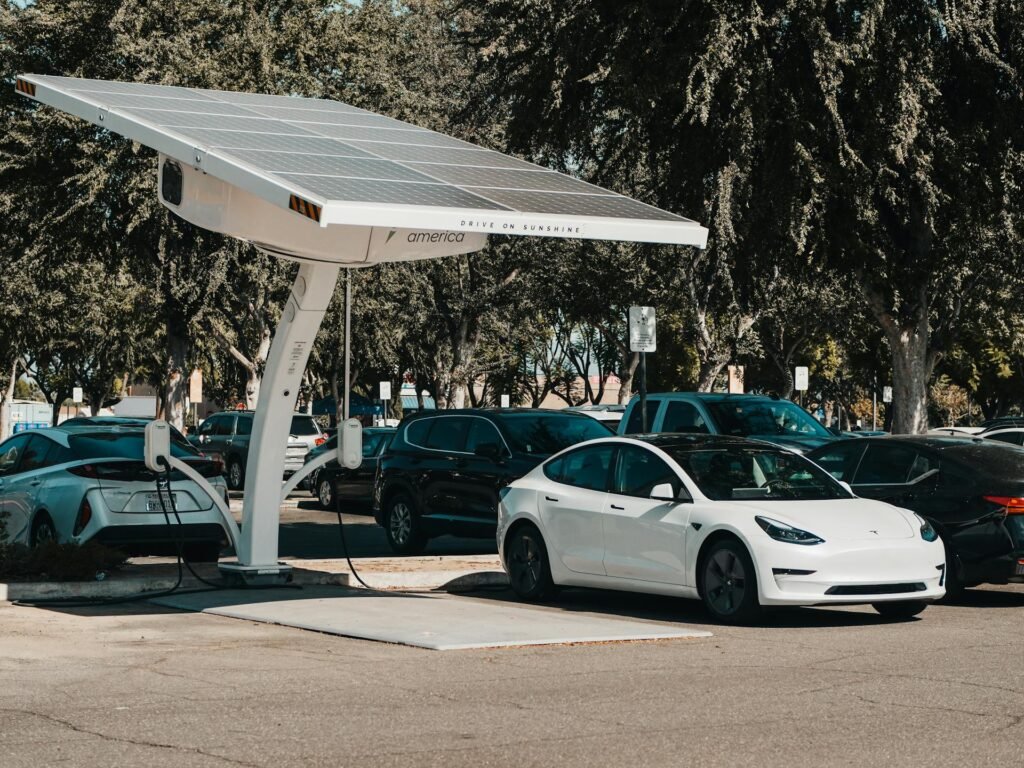Do you know that a single car emits about 4.6 metric tons of carbon dioxide (CO₂) every year?
Now, take a moment and think of the millions of cars driving around the world daily. The numbers quickly become overwhelming, right?
You see, transportation is one of the largest sources of greenhouse gas emissions, and passenger cars are responsible for more than half of those. It’s no wonder our planet is heating up, ice caps are melting, and clean air is harder to find.
That’s why more and more people, and especially those with keen interest in environmental wellness, are looking at electric vehicles (EVs) as an alternative. They’re not perfect, but compared to traditional gas cars, they offer a much cleaner and more sustainable future.
If yet, it might be time to consider switching. But before you do that, here are ten things you should know — explained in a simple, practical way.
1. Electric Cars Are Cleaner — But Not 100% Green
One of the biggest selling points of EVs is that they produce zero tailpipe emissions. That means no exhaust smoke, no nitrogen oxides, and no harmful particulates pumping into the air as you drive. Cities with high EV adoption (like Oslo, Norway) are already reporting noticeably cleaner air.
But here’s the catch: the electricity that powers EVs has to come from somewhere. In countries that rely heavily on coal or natural gas, charging your EV still creates emissions at the power plant.
However, research from the International Energy Agency (IEA) shows that, on average, EVs still emit 50% to 75% less CO₂ over their lifetime compared to gasoline cars — even when the grid isn’t fully green. And as renewable energy grows, EVs only get cleaner.
2. The Upfront Cost Can Feel High
EVs can be intimidating price-wise. In 2025, the average EV costs about $52,000 globally, while a traditional gas-powered car is closer to $40,000. That’s a big difference.
But it’s important to think long-term. Fuel savings alone are huge: charging an EV at home is often equivalent to paying $1–$1.50 per “gallon” of electricity. Compare that to $5 per gallon of petrol in some regions, and the savings quickly stack up. Plus, EVs require less maintenance (no oil changes, fewer moving parts), which can save you thousands over the years.
So yes, the upfront price is higher — but it’s like buying solar panels. You pay more at first, and then enjoy years of lower bills.
3. Charging Takes Patience
One of the biggest differences between owning an EV and a gas car is how you refuel. With a gas car, you’re in and out of the station in five minutes— and sometimes even less.

With an EV, charging takes longer:
- Fast chargers (DC): Can give you 200–300 km of range in about 20–30 minutes.
- Level 2 chargers (home or public): Usually add 30–40 km of range per hour.
- Standard home outlet (Level 1): Adds about 5–10 km per hour — more of an overnight solution.
At first, this might feel inconvenient. But many EV owners say they actually spend less time “refueling” overall, because the car charges while they sleep. Imagine never having to stop at a petrol station again!
4. Range Anxiety Is a Thing — But It’s Fading
When EVs first appeared, most had ranges of about 100–150 km per charge. No wonder people worried about getting stranded! That fear is called range anxiety.
Today, things have improved dramatically. Many EVs in 2025 offer 400–600 km (250–370 miles) of range, enough for several days of commuting. Some luxury models, like the Lucid Air, push beyond 800 km (500 miles). In fact, recently, this model set a new record by going 749 miles (1205km) on a single charge.
But let’s stick to the 500 miles. For daily city driving, this is more than enough. The average driver only travels 30–40 km per day. For road trips, planning your route around charging stations is still necessary — but networks are growing fast, making it easier than ever.
5. Less Maintenance = Less Stress
Traditional engines are complicated beasts with thousands of moving parts. EVs are much simpler. They don’t need oil changes, timing belts, spark plugs, or exhaust repairs. Instead, most maintenance is as simple as rotating tires, changing brake pads, and topping up windshield washer fluid.
Brakes even last longer on EVs thanks to regenerative braking — the system that recaptures energy when you slow down. A study from Consumer Reports found that EV owners spend about 50% less on repairs and maintenance over the lifetime of their vehicle compared to gasoline car owners.
6. Batteries Last a Long Time
Think of your EV battery like the one in your smartphone — it slowly degrades over time. But here’s the good news: it degrades very slowly.
Most modern EVs lose only 2–3% of capacity per year, meaning that after 10 years, your car will still hold around 80% of its original charge. Manufacturers back this up with warranties that typically cover 8 years or 160,000 km (100,000 miles). Some companies even offer extended coverage to reassure buyers.
Yes, replacing a battery can be expensive (often $10,000–$20,000), but many EVs will never need one during their first ownership cycle. Plus, recycling technology is improving, so old batteries can be repurposed for home energy storage.
7. Charging Stations Are Spreading Quickly
Ten years ago, finding a charging station was like hunting for Wi-Fi in the early 2000s — rare and frustrating. But things are changing fast.

Globally, the number of public charging points hit 4 million in 2023, and that number is growing by around 40% per year. In Kenya, exciting projects like BasiGo’s electric bus fleet and Autopax’s EV charging hubs are paving the way for broader adoption.
This means that in just a few years, “Where will I charge?” won’t be the worry it once was. Charging points will be as normal as petrol stations.
8. EVs Save Money in the Long Run
While gas prices fluctuate wildly, electricity tends to be more stable — and often cheaper. Studies by the Department of Energy (USA) found that the cost of fueling an EV is about half that of a gasoline car over its lifetime.
Add in lower maintenance costs, and some estimates suggest EV owners can save $6,000–$10,000 across a decade. If you drive a lot, that number can be even higher. For families or commuters, that’s real money back in your pocket.
9. Government Incentives Can Help
Governments around the world are pushing for EV adoption, and many offer financial perks. These can include:
- Purchase rebates or tax credits (sometimes thousands of dollars off).
- Free parking or toll discounts in certain cities.
- Reduced import duties on EVs in some countries.
For example, in Kenya, EVs already enjoy lower excise duty rates compared to gas and diesel cars. These policies are designed to make EVs more affordable — so before buying, check what benefits apply where you live.
10. It’s a Lifestyle Shift
Owning an EV isn’t just about driving — it’s about adopting a new mindset. You’ll think differently about energy, plan trips around charging stops, and even find yourself celebrating clean kilometers driven.
It’s similar to going plastic-free or starting a compost bin. At first, it feels like a big change. But soon, it becomes second nature, and you realize you’re not just driving — you’re helping build a future where our planet can breathe a little easier.
Final Thoughts
Gasoline cars have taken us far, but they’ve also left scars on our planet. Electric cars aren’t perfect, but they are a giant step forward in creating a more sustainable future.
Before you buy, remember these ten things: the good, the practical, and the challenges. Because in the end, buying an EV isn’t just about saving money or following trends. It’s about joining millions of people worldwide who are driving change — literally — for our lovely planet.




Hmm it seems like your site ate my first comment (it was super long) so I guess I’ll just sum it up what I had written and say, I’m thoroughly enjoying your blog. I as well am an aspiring blog writer but I’m still new to everything. Do you have any recommendations for beginner blog writers? I’d genuinely appreciate it.
You got a very superb website, Gladiola I noticed it through yahoo.
Have you ever thought about adding a little bit more than just your articles? I mean, what you say is fundamental and everything. However think about if you added some great graphics or video clips to give your posts more, “pop”! Your content is excellent but with pics and clips, this site could certainly be one of the very best in its field. Very good blog!